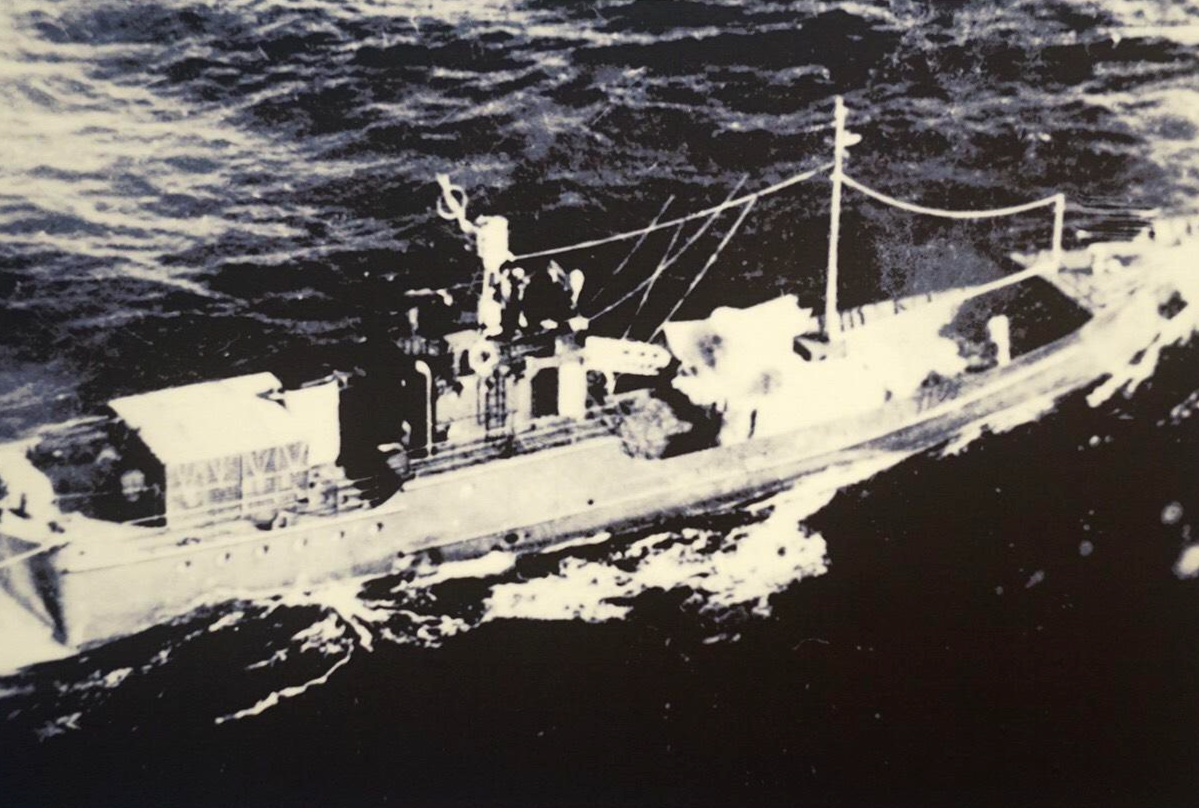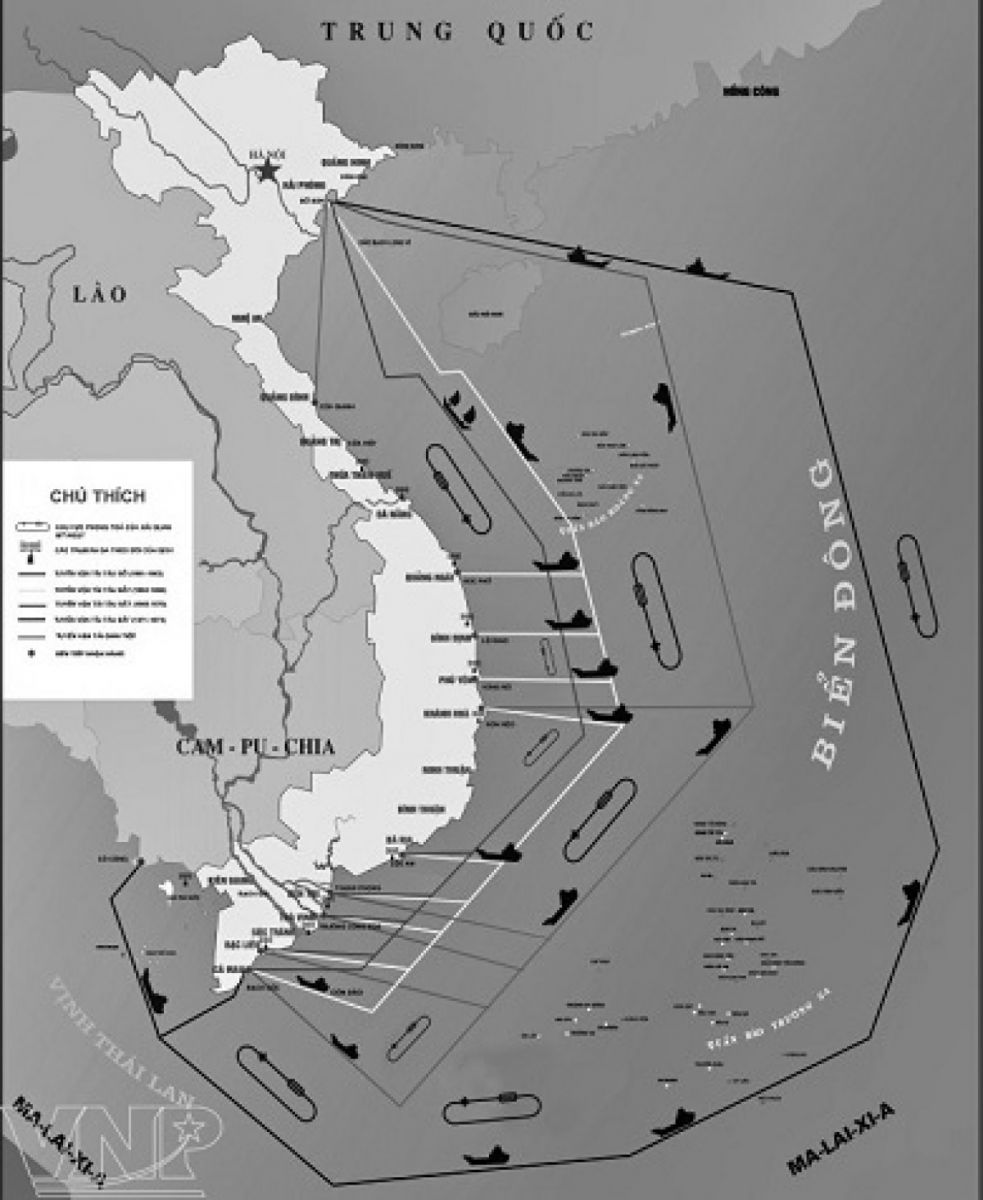Part 1: Ho Chi Minh Trail at Sea - The Strategic Vision of the Party and President Hồ Chí Minh.

Unnumbered ships of the Ho Chi Minh Trail at sea. Source: Vietnam News Agency (VNA)
During the resistance war against the United States for national salvation, the Ho Chi Minh Sea Trail became a legendary route in the history of Vietnam's struggle against foreign invasion. It exemplified the strategic brilliance and the unique, creative art of directing people's war by the Communist Party of Vietnam and President Hồ Chí Minh. It serves as a testament to the courage, intelligence, and unwavering desire for independence, freedom, and national unification of the Vietnamese military and people. Along with the Trường Sơn Road – the Ho Chi Minh Trail on land, the Ho Chi Minh Sea Trail was one of two strategic transportation routes that provided timely and effective support in terms of weapons, equipment, manpower, and resources for the revolution in the South.
Immediately after the Geneva Agreement was signed, Vietnam was temporarily divided into two regions: North and South. The government of the Republic of Vietnam, with the support of the United States, employed every possible means to transform South Vietnam into a military base and a new type of colony, using it as a springboard to launch attacks on the North. In response to this situation, on January 13, 1959, the 15th Plenary Session of the Central Committee of the Communist Party (2nd term) resolved to alter the direction of the revolution in the South, shifting from political struggle to a combination of both political and armed struggle. The session also called for the swift organization of support in terms of manpower, resources, and weapons from the North to the Southern battlefield.
From 1959 to 1960, in response to the growing revolutionary movement in South Vietnam, the Politburo of the Central Committee of the Communist Party of Vietnam and the Central Military Commission decided to establish a maritime transport route to provide direct support to the South Vietnam Liberation Army. However, the development of the North-South weapon supply route began in 1946, led by Captain Nguyễn Thị Định, who commanded the route to the North in late March 1946. Later, General Nguyễn Thị Định also oversaw a ship crossing the ocean from Phú Yên, carrying 12 tons of weapons. This shipment safely arrived in Bến Tre around mid-December 1946, where it was delivered to Military Region 8. After a period of study, in July 1959, the 603rd Naval Transport Battalion, part of Division 559, was established and stationed at the Gianh River estuary in Quảng Bình. For the sake of maintaining secrecy, the Battalion was given the name “Gianh River Fishing Fleet.” In the early stages, the convoy was composed of small transport vessels, disguised as fishing boats from the South, which entered southern waters. Although these vessels had full registration numbers, they did not display any markings on their hulls in order to preserve confidentiality. As a result, these ships became commonly known as the “Unnumbered Ships.”
After five months of “rehearsals” for the sea crossing, on the evening of January 27, 1960, a vessel from Company 1, Battalion 603, departed, carrying 5 tons of weapons and medical supplies to support the battlefield in Military Region 5, with the planned landing at the foot of Hai Van Pass. This marked the first “Unnumbered Ship” to cross the sea, inaugurating the legendary Ho Chi Minh Sea Trail. However, the ship was struck by a storm, causing severe damage, and was later intercepted by a U.S. military patrol. The crew was forced to jettison the cargo overboard and scuttle the ship. That afternoon, all six sailors aboard were captured. During their captivity, the comrades were separated and imprisoned in Da Nang, Con Dao, and other locations by the Republic of Vietnam authorities, where five sailors lost their lives. Only one comrade survived and was released in 1974. The first sea mission to transport weapons to Military Region 5 ended in failure. The Central Military Commission recognized that using wooden boats powered by sails to transport weapons to the southern battlefield was fraught with difficulties and unsafe. As a result, they instructed Battalion 603 to temporarily suspend operations and seek an alternative method of transportation.

The map illustrates the route taken by the supply ships along the Ho Chi Minh Sea Trail. Source: Vietnam News Agency (VNA).
Meanwhile, the U.S. government pursued a new form of colonial aggression by increasing aid to the Ngô Đình Diệm regime, under the direction of the U.S. “advisory” system. This included the provision of modern equipment, weapons, and military resources to gradually execute operations aimed at blockading and sabotaging the North. They implemented the “anti-communist, eliminate communism” policy and escalated sweeping military operations to terrorize and dismantle the forces and revolutionary movement of the Vietnamese people.
Under the direction of the Party Central Committee, partial uprisings, including the rebellion in Bác Ái (February 1959), the uprising in Trà Bồng (August 1959), the battle at Giồng Thị Đam - Gò Quản Cung (September 1959), the battle of Xẻo Rô (October 1959), and the battle of Tua Hai (January 1960), were launched simultaneously and rapidly evolved into the Đồng Khởi movement, which spread across the Southern provinces.
The success of the “Đồng Khởi” movement in early 1960 marked a pivotal moment in the Southern revolution. The urgent need for military supplies, weapons, and equipment for the people and soldiers in the South became a critical issue, while overland supply routes faced numerous challenges. On October 23, 1961, the Party Central Committee and President Hồ Chí Minh made the decision to establish Brigade 759 (the precursor to Brigade 125, Naval Region 2 today) with the mission of researching and establishing a strategic military transport route – the Ho Chi Minh Sea Trail – to transport cadres, soldiers, and weapons in support of the revolution in the South. This policy reflected the utmost determination to overcome all sacrifices and hardships in order to establish the route and deliver weapons to strategic areas distant from the Northern rear, at a time when the Trường Sơn supply route had yet to reach these regions. It was truly a remarkable achievement, accomplished under conditions of limited personnel and equipment, and, most notably, the necessity to counter the enemy's relentless efforts to block and destroy the supply routes.
In 1961, the United States initiated the strategy of “Special War,” escalating search-and-destroy operations while simultaneously expanding its efforts to sabotage the North by deploying commandos and implementing blockades on borders and seas to prevent the flow of supplies to the North. In response to the increasing need for support for the revolution in the South, in mid-August 1962, the Central Military Commission decided to initiate a new shipment of weapons to the South. On the night of October 11, 1962, the first motorized wooden vessel of Brigade 759, carrying 30 tons of weapons, departed from the port of Đồ Sơn (Hải Phòng) en route to Cà Mau. On October 19, the ship successfully docked at Vàm Lũng, where all the weapons were received by local forces in accordance with the plan..